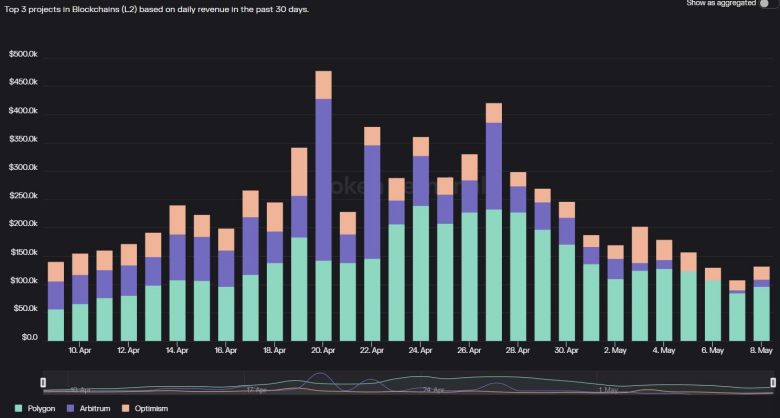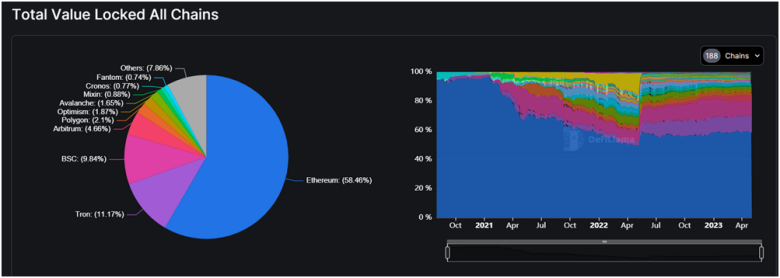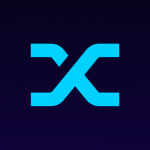
Executive summary: Optimism is a leading Layer-2 scaling solution for Ethereum, which uses “optimistic rollups” to make Ethereum faster and cheaper. This has allowed the company to rapidly amass nearly $1 billion in Total Value Locked (TVL).
The network’s native token, OP, has a market cap of over $660 million. If investors are optimistic about Optimism, the OP token is like investing in the “company.” Similarly, the protocols built on top of Optimism are “companies” in their own right, many spanning multiple chains.
This provides interesting opportunities for investors to buy and hold quality tokens for the long term. We’ll cover all these investing opportunities below.

What is Optimism?
Ethereum still dominates decentralized finance (DeFi), accounting for about 60% of total value locked (TVL) in the space. However, even with the transition to a Proof-of-Stake (PoS) consensus mechanism, there is still room for improvement, and that’s what Layer-2 solutions aim to achieve.
Optimism is one of the fastest-growing Layer-2 networks, and its goal is to make Ethereum faster and cheaper, driving DeFi and Web3 adoption. While Polygon and Arbitrum are still larger L2s in terms of TVL, Optimism is showing good revenue growth, particularly against Arbitrum, its closest competitor.
Optimism’s fundamental technology, called “optimistic rollups,” bundles numerous transactions into manageable portions, effectively boosting transaction speed while reducing associated costs. This approach has fostered its growth to nearly $1 billion in TVL.

Let’s break down “optimistic rollups.”
Transactions are executed on Optimism (Layer-2) and subsequently batched and submitted to Ethereum (Layer-1). These batches are the “rollups,” optimizing user experience and safeguarding transactions.
Optimism’s transactions are presumed valid until proven otherwise (an “optimistic” viewpoint), with a challenge period that offers a window for fraud detection. This results in a seven-day withdrawal period from Optimism to Ethereum, ensuring the validity and security of each transaction.
Optimism supports various DeFi wallets, as well as additional projects to be built on top of it. OP’s market cap is over $660 million at the time of writing, while the blockchain hosts over 100 decentralized finance (DeFi) applications, each their own investment opportunity.
Top 10 Protocols on Optimism by Total Value Locked
 Uniswap v3
Uniswap v3
Type of dApp: DEX
BMJ Score: 4.5
Uniswap is the largest DEX by trading volume. The v1 platform was launched in 2018 as an AMM model. Uniswap v3 was launched in 2021 on Ethereum mainnet and later deployed on Optimism and four other chains. It introduces concentrated liquidity and multiple fee tiers, allowing liquidity providers (LPs) to control capital allocation and compensate risk.
The latest version offers up to 4000x capital efficiency compared to v2, leading to higher returns and lower slippage. LPs can optimize asset exposure and simulate fee-earning limit orders. Furthermore, v3’s oracles provide time-weighted average prices (TWAPs) for improved integration. Thanks to its advanced features, Uniswap v3’s Ethereum swaps are slightly cheaper than v2, while Optimism deployment significantly reduces costs.
At the time of writing, v3 accounts for almost 75% of all activity on the Uniswap ecosystem, with almost $3 billion in TVL.
 Aave v3
Aave v3
Type of dApp: Lending
BMJ Score: 4.0
Aave is a decentralized, non-custodial lending protocol enabling users to supply, borrow, or liquidate assets. The v3 version of the protocol enhances yield generation, borrowing power, and introduces novel features. The Portal feature facilitates cross-network liquidity flow, allowing approved bridges to transfer assets between Aave v3 markets. The Efficiency Mode optimizes borrowing power for correlated assets, promoting use cases like high-leverage forex trading and efficient yield farming. Isolation Mode permits new assets to be listed as isolated, limiting the collateral to a single asset. Siloed Borrowing allows potentially manipulable oracles (like illiquid Uniswap v3 pairs) to be borrowed separately, minimizing risk to the protocol’s solvency.
At the time of writing, Aave v3’s total value locked (TVL) is $1.4 billion compared to v2’s $4+ billion. In terms of active loans, Aave is more than 400% ahead of its nearest competitor Compound.
 Stargate Finance
Stargate Finance
Type of dApp: Cross-chain
BMJ Score: 3.5
Stargate Finance is a LayerZero-based cross-chain bridge solution, simplifying cross-chain token trading between various blockchains such as Ethereum, Optimism, BNB Chain, Avalanche, Polygon, Arbitrum, and Fantom.
Stargate focuses on stablecoins and leverages LayerZero’s infrastructure to establish liquidity pools with attractive interest rates. Stargate addresses security concerns that are common among bridges. It relies on cross-verification technology between Oracle and LayerZero and uses omni-chain tokens instead of the wrap-token method to ensure a high level of security.
Key features include 1:1 native asset cross-chain swaps, unified liquidity pools, and earning stablecoin rewards through providing liquidity. Users can farm the native STG token and stake it to receive veSTG, Stargate’s governance token. As the leading Layer-0 bridging solution, Stargate enjoys over 20x the daily users as its nearest competitor, giving it significant revenue growth in 2023.
 Synthetix
Synthetix
Type of dApp: Synthetic asset protocol
BMJ Score: 3.5
Synthetix is a decentralized finance (DeFi) protocol on Ethereum and Optimism, enabling users to mint and trade synthetic assets that mimic real-world and crypto assets without the need for intermediaries. Through the use of its native token (SNX) as collateral and smart contracts, Synthetix can generate synthetic assets (synths) like sUSD and sBTC, which track the value of the US dollar and bitcoin, respectively.
The protocol relies on decentralized price oracles to ensure accurate tracking and offers exposure to various asset classes, including commodities, fiat currencies, and indexes. Synthetix serves as a backend liquidity provider for user-facing DeFi apps, addressing liquidity and slippage issues common in DEXs. As Ethereum gas fees have increased, Synthetic has seen its revenues increase by more than 50% since the start of 2023.
 Curve Finance
Curve Finance
Type of dApp: DEX
BMJ Score: 3.0
Curve Finance is a DEX focusing on stablecoin trading. It is currently the largest DEX by TVL, with almost $5 billion worth of crypto locked on Curve at the time of writing. As an AMM similar to Uniswap, Curve facilitates efficient transactions by maintaining low fees and slippage through its liquidity pools.
The platform’s focus on stable assets, including DAI, USDT, USDC, BUSD, and TUSD, differentiates it from other DEXs. The CRV token, the native token of the Curve protocol, incentivizes liquidity provision and encourages user involvement in the governance process. Curve’s substantial liquidity makes it a valuable component of other DeFi apps, such as Yearn Finance and Compound. Utilizing a unique pricing formula, Curve minimizes slippage, even for substantial transactions, offering competitive rates comparable to centralized exchanges.
While Curve has far fewer pools then its closest competitor Uniswap, it also has more than double the TVL. With its focus on stablecoins it is poised for significant growth once the U.S. clarifies its stance on stablecoin regulation.
 Beefy
Beefy
Type of dApp: Yield aggregator
BMJ Score: 2.0
Beefy is a decentralized, multichain yield optimizer that facilitates compound interest earning on crypto holdings. The yield aggregator supports 20 networks, including Optimism.
Through smart contract-based investment strategies, Beefy maximizes rewards from liquidity pools, AMM projects, and other yield farming opportunities. Its main product is Vaults, which allow users to stake multiple crypto tokens that are automatically compounded to increase the initial deposit. Importantly, despite the name of the product, funds are not locked, and users maintain full control.
BIFI, Beefy’s native token, offers holders a share of platform revenue and voting rights on governance issues. Staked BIFI can earn more BIFI or blue-chip tokens like ETH, BNB, and others in BIFI Earnings Pools.
While there are nearly 100 yield aggregators, Beefy is the second largest, eclipsed only by Yearn.finance. Where it really excels is in the chains supported. Where Yearn supports only 4 chans, Beefy supports 20, making it the yield aggregator with the broadest support for chains.
 Velodrome Finance
Velodrome Finance
Type of dApp: DEX
BMJ Score: 2.0
Velodrome Finance is a decentralized exchange (DEX) employing the Automatic Market Maker (AMM) model. It is built on the codebase of Solidly and is focused on Optimism, aiming to deliver deep liquidity, low exchange fees, and minimal slippage. Currently, it accounts for about a third of all TVL on Optimism.
Velodrome combines the Vote-Escrow Token (veVELO) and Olympus DAO (3.3) game theory mechanisms, rewarding liquidity providers and veVELO holders with VELO emissions and encouraging long-term holding.
Its unique “bribe” feature enables users to incentivize veVELO holders to vote for their preferred liquidity pools. With up to 500 supported pairs and multiple liquidity pools, Velodrome offers a diverse, low-cost trading platform that benefits traders, veVELO holders, and the broader Optimism ecosystem.
 Beethoven X
Beethoven X
Type of dApp: DEX
BMJ Score: 1.5
Beethoven X is a community-driven DEX and DeFi platform residing on Optimism and Fantom Opera. It was developed by an anonymous team and represents a fork of the Balancer v2 protocol, one of the largest DEXs.
Beethoven X offers innovative, capital-efficient DeFi solutions for crypto traders and investors. It encompasses programmable liquidity, offering a future-oriented product adaptable to the evolving needs of the industry. Its core infrastructure includes unique features such as Weighted and Boosted Pools as well as Liquidity Bootstrapping Pools (LBPs). The pools comprise up to 8 crypto assets and function as self-balancing index funds.
The platform generates revenue through trading and flash loan fees, part of which is redistributed as BEET rewards to fBEETS holders (representing LP positions). Users can earn rebalancing fees and additional incentives by maintaining the crypto equivalent of an index fund.
 dHedge
dHedge
Type of dApp: Asset management
BMJ Score: 1.5
dHedge is a decentralized asset management platform operating on Ethereum-based blockchains, including Ethereum, Polygon, and Optimism. The non-custodial and censorship-resistant protocol enables users to maintain full ownership of their assets while benefiting from expert management strategies.
By connecting any ERC-20 compatible wallet to the dApp, individuals can deposit, store, and sell trust-minimized vault tokens without lockups. The platform puts a great emphasis on transparency, with all transactions being verifiable on the blockchain. Key features of dHedge include non-custodial fund ownership, decentralization, social interactions between managers and depositors, and verifiable transactions. Users can invest in various strategies based on transparent track records.
Besides using the platform as a way to find potential fund managers, trading in the DHT token can be quite lucrative as it tends to trade in a fairly well defined range.
 Sonne Finance
Sonne Finance
Type of dApp: Lending
BMJ Score: 1.0
Sonne Finance is a decentralized, transparent, and non-custodial lending and borrowing protocol native to the Optimism network. Compatible with the Ethereum Virtual Machine (EVM), it operates similarly to established platforms like Compound Finance and Aave.
Sonne Finance offers high-liquidity money markets with dynamically adjusted incentives for assets such as wETH, USDC, USDT, DAI, OP, and sUSD. The platform aims to be the leading lending solution on Optimism by providing competitive incentives, deep liquidity, and native integration. Additionally, it introduces a unique bribe-reward mechanism in collaboration with Velodrome Finance, benefiting sSONNE stakers with revenue shares and VELO tokens.
Investor Takeaway
Optimism’s Layer-2 scaling solution presents significant growth potential for Ethereum, effectively addressing scalability and cost issues. Its user-friendly interface, compatibility with various DeFi wallets, and support for over 100 DeFi applications position it as a promising investment opportunity.
The native token, OP, has shown consistent stability, with its price ranging from $1.70 to $3.00 for most of this year. By contrast, Arbitrum’s ARB token, after surging at the start of the year, has been dropping steadily for most of 2023. Polygon’s MATIC has seen a similar pattern, doubling to start the year and then returning nearly to its baseline.
The prominent protocols operating on Optimism, including Velodrome Finance, Synthetix, Aave, and Uniswap, are innovative DeFi solutions with large user bases, reinforcing Optimism’s potential for substantial growth.
However, if Ethereum can solve its scalability issues, we do not know if L2s will be needed long-term. Even if they are, we don’t know which L2(s) will capture most of the market. While we believe in Ethereum as an L1, the battle for L2 supremacy is just beginning, and it’s still anyone’s game.
Subscribe to the Bitcoin Market Journal newsletter to get blockchain investment opportunities delivered to your inbox!
- SEO Powered Content & PR Distribution. Get Amplified Today.
- PlatoAiStream. Web3 Data Intelligence. Knowledge Amplified. Access Here.
- Minting the Future w Adryenn Ashley. Access Here.
- Buy and Sell Shares in PRE-IPO Companies with PREIPO®. Access Here.
- Source: https://www.bitcoinmarketjournal.com/protocols-on-optimism/



